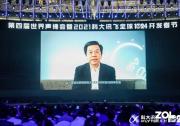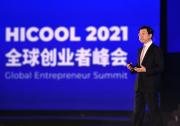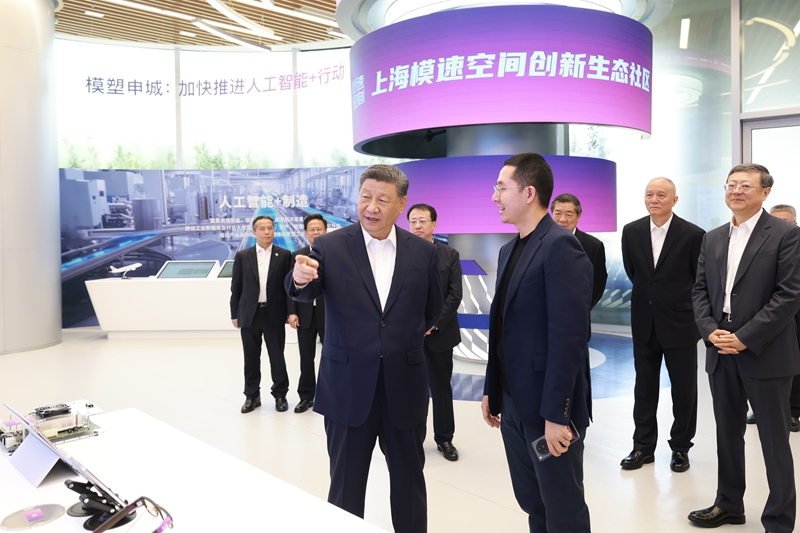李开复《经济学人》专栏:新冠疫情加速中国自动化大跃迁
创新工场董事长兼首席执行官
创新工场人工智能工程院院长
新冠疫情加速中国自动化大跃迁
2003年非典疫情期间,北京的实体商店全数关门歇业,这迫使一家零售商尝试互联网转型,开拓新市场,这家零售商后来发展为当今中国电子商务巨头之一:京东。再把时间快进到我们所在的2020年新冠疫情期间,京东大举推行新型自动化仓储,单日订单处理能力超过150万单,推动销售额飙升20%,还在武汉用上了机器人和无人机配送,还计划于今年内在各地开设1000家自动化餐厅。
我们的世界正迎来疫情冲击下的重大革新:自动化、智能化和数字化。中国经济正在经历一场由自动化驱动的升级再造,大规模引入机器人技术来降低商业运作中人与人的接触;在线业务、算法和自动化实现了降本提效及安全保障。虽然这样的转变在此次疫情之前就已发端,但疫情确实起到了加速的作用。同时我预测,自动化技术短期内可以用于保证社交安全距离,长期而言将对商业运行机制产生更广泛、更深层次的影响。这一波后疫情时代的自动化浪潮在中国如火如荼,或许也将于世界各地的商业环境开花结果。
过去人们以为要完成生活中的大事小情,就得与他人面对面互动。经历疫情隔离后,他们发现其实并非如此。从医疗看护、餐饮、配送、制造、物流、运输和教育这类蓝领属性的职业,到金融、客服、销售、人力资源、法律和会计这些白领属性的工作,很大程度上都可以由软件和机器人技术来完成。
从历史角度看,当经济下行周期恰逢新一波成熟技术的应用落地,往往会掀起自动化的热潮。企业受到成本压力后,会觉得有必要削减工作岗位和尝试新技术。一旦企业成功引进机器人来取代人类员工,老板们就不太可能走回头路,因为机器人不会生病、不会旷工、不会因为要执行危险任务而要求涨薪。事实上,机器人可以说是疾病大流行期间取代高危岗位的最佳解决方案。难怪美国麻省理工学院的经济学家大卫·奥特尔 (David Autor) 将新冠疫情称为“自动化推手”。
中国在发展自动化经济方面有着得天独厚的优势,虽然拥有庞大的劳动力,但在过去20年间,中国的劳动力成本增加了十倍,是越南的两倍多。作为世界工厂,中国有十足的动力实现智能制造,进而从制造大国晋升为制造强国。现在中国已经是全球最大、增长最快的工业机器人市场,2018年国内的工业机器人市场规模激增21%,达到54亿美元,占全球销售额的三分之一,各行各业也在积极探索将机器人技术融入制造业的方方面面。
自动化加速的趋势还辐射到制造业以外的诸多领域。2月疫情在武汉迅速蔓延,规模庞大的火神山医院在十天内建成,成列的机器人在医院内奔走,进行消毒和物资运送,机器人的“身影”还出现在各地的学校、医院和商业建筑中。上海机器人公司擎朗开发的一款无人车结合了激光雷达、计算机视觉、传感器等技术,可执行无接触消毒任务。
前阵子我在北京的家中隔离时,网购的包裹和食品都由小区的机器人运送,它装着轮子,外形敦实,很像《星球大战》中的R2D2,送货时先以无线呼叫电梯,自主导航至我家门口,然后拨打我的电话通知开门取件。我取走快递后,机器人就会回到前台等候下一个任务。
美团外卖也推出了“无接触”配送服务,将餐品送至指定的取餐点,外卖小哥和顾客无需互动便可完成交易,美团还在积极测试无人驾驶送餐车。微信也开发了一个系统,人们可以用手机浏览餐厅菜单、点餐和结账,由人类或机器人将食物送上餐桌。穿梭于店内的机器人服务员可能是为了隔离安全,也可能是为了炒噱头,但未来它们或许会成为大多数普通餐厅的基础配置(上流餐厅除外)。
不过短期来看,自动化对白领类型的工作影响更大。虽然流水线这样基础的重复性工作容易实现自动化,但多数手工技艺对机器人来说仍旧难以掌握。21世纪的“智能自动化”将有别于20世纪的初级物理自动化,因为如今的机器人需要将机械工程和用于感知和精细动作操控的人工智能技术模块融为一体。而在疫情期间,白领员工居家上班,他们在线上的一切活动、承担的所有任务都被转化成数据,标志着向机器全面接手迈出了一小步。这就是自疫情危机爆发以来,提供“机器人流程自动化”的公司迎来一波销售热潮的原因。
作为身在中国的技术投资人,我第一手见证了这些技术在疫情期间落地应用,举例创新工场投资的追一科技公司开发了一款客服中心自动化软件。疫情期间,国内一家大型银行的信用卡部门部署使用了该软件,每天和客户的通话量高达35万,相当于1200名人工客服的工作量,这类对话机器人不仅降低了成本,还提高了客户满意度,增加了收入。现在追一科技已将AI数字员工的落地应用扩大到智能营销、智能分析、智能培训、智能助理等诸多场景。
后疫情时代的商业环境新脉络正在成形,一切可通过自动化降本提效的运营环节都将实现自动化,而自动化过程压缩人类岗位,不仅仅是为了利润和绩效,更是为了健康和安全。机器人和软件在疫情发生前便已展现出吸引力,如今这些技术更是有理由成为企业刚需——无论新冠肺炎疫苗是否会研发出来。
虽然一些工作因自动化改变或消亡,但许多新的工作岗位也被创造出来,例如数据中心、5G设备、智能软件等新的数字化基础设施,软件将需要人类员工加以研发部署,而机器人的操作和维修也需要人类技师。同样,以人为核心的数据收集和标签分类工作也需要人类参与,以便为人工智能提供“燃料”,助力自动化经济发展。
许多行业将根据“人类-数字共生”的崭新模式获得重塑。以教育领域为例,人工智能可担任24小时在线的老师和教练,而人类老师则是智慧的导师和激励者;在医疗领域,人工智能将协助人类医生,充当精准的、有针对性的诊断引擎,而人类医生则负责与患者沟通和做出最终的决定。
在向自动化经济转型的进程中,政府和民间机构需要携手努力,共同试验和树立最佳模式,帮助劳动者做好准备,并对面临失业风险的人进行再培训。中国较早采用自动化技术,而且有望成功从一个贫困的农业经济体转型为一个工业强国,说明中国的实践可以提供宝贵的经验。
二战后,美国的商业惯例成为了全球标准,世界各地的企业都立志与之看齐,在此次疫情的推动下,中国将加快推进自动化、人工智能和机器人技术深入各行各业,同时为其他地区探索未来方向提供可借鉴的思路。■
The world after covid-19
Kai-Fu Lee on howcovid spurs China's great robotic leap forward
The pandemic is accelarating a shifttowards people-less companiesthat will eventually characterise business everywhere
DURING THE SARS crisis almost 20 years ago, shops in Beijing were completely closed. It forced one retailer, Jingdong Century Trading Co, to try its luck online.That retailer was JD.com, today one of China’s e-commerce giants. Fast forward to 2020. Amid the covid-19 crisis, JD.com managed a 20% spike in sales with the help of a new, automated warehouse that can process more than 1.5m orders a day. In Wuhan, it delivered packages using robots and drones. It plans to open 1,000 automated restaurants this year across China.
The efforts are representative of a broader shift amid the pandemic towards automation, artificial intelligence and digitisation. The Chinese economy is undergoing a great robotic leap forward, as it removes human touch-points—literally—in its operations. Online businesses, algorithms and automation save costs, boost efficiency and protect public health. Though the shift predates covid-19, the crisis has accelerated it. Social distancing via automation will have wide-ranging implications. As goes China, so may go business everywhere.
People used to expect to interact with other people to get things done. No longer. Much work can be largely handed over to a combination of software and robotics. That’s true for blue-collar jobs in health care, food service, delivery, manufacturing, logistics, transport and education. And it is increasingly happening for back-office white-collar jobs in finance, customer service, sales, human resources, law and accounting.
Historically, automation tends to happen when economic difficulties coincide with maturing technologies. Companies feel they need to cut costs by slashing jobs and trying out new technologies. And once a company has replaced an employee with a robot and proven its efficacy, it is unlikely to go back. Robots don’t get sick. They don’t strike. They don’t demand higher wages for dangerous jobs. In fact, they are ideal for dangerous jobs, which in a pandemic is any job that requires interaction with people. It is no wonder that David Autor, an economist at MIT, calls the covid-19 pandemic and economic crisis “an automation-forcing event”.
China is uniquely positioned to lead the world in the automation economy. Though the country has a large workforce, the cost of labour has increased ten-fold in the last 20 years and is now more than twice as high as Vietnam’s. As the workshop of the world, it has an incentive to automate its manufacturing sector, which enjoys a lead on high-quality products. China is now the world’s largest market for industrial robotics and the fastest-growing, surging by 21% to $5.4bn in 2018. This represents a third of global sales. As a result, Chinese companies are developing a leg-up on the world in terms of how to work with llic colleagues.
This has spilled over to domains beyond manufacturing. When the pandemic was spreading rapidly in Wuhan in February and the massive Huoshenshan Hospital was built in ten days, a fleet of robots was scurrying inside for disinfecting and delivering medical supplies. These machines are used across China in schools, hospitals and commercial buildings. Keenon, a robotics company in Shanghai, has developed an autonomous vehicle to disinfect areas, using a combination of LIDAR, machine vision and sensors.
Recently, when I was in quarantine at home in Beijing, all of my e-commerce packages and food were delivered by a robot in my apartment complex. The item would be placed on as turdy, wheeled creature resembling R2D2. It could wirelessly summon the elevator, navigate autonomously to my door and then call my phone to announce its arrival. I could then take the delivery and the bot would return to reception.
A food-delivery firm, Meituan, has introduced a “zero contact” service, where the meals are delivered to specific drop-off points, but the driver and customer need never interact. The company is testing self-driving delivery vehicles. WeChat, a popular social-media and payment platform, has developed a system for people to use their phone to read a restaurant menu, order a meal and settle the bill, with either a human or a robot delivering the food to the table. Robot servers today are both gimmicks and safety measures, but tomorrow they may be a normal part of table service for most restaurants, save for posh ones.
However, the impact of automation is likely to be higher for white-collar jobs in the short term. Although basic, routine tasks like assembly-line work are easy to automate, much manual labour is hard for robots. “Intelligent automation” in the 21st century will be different from the rudimentary physical automation of the 20th century, since today’s robots require drawing together mechanical engineering, AI for perception and fine-motor manipulation. Yet as white-collar employees work from home during the pandemic, everything happens online and all tasks are translated into data, it is a small step to have machines take over completely. Companies offering “robotic process automation” are experiencing a boom in sales since the crisis began.
I’ve seen these trends develop as a technology investor in China—and had a front-row seat during lockdown. Zhuiyi Technology, a company in our portfolio, develops software for call-centre automation. During the pandemic, the credit-card department of a large Chinese bank used the system to call its customers, managing 350,000 calls a day, or the equivalent of 1,200 human customer-service representatives. These conversational bots not only reduce cost, but also improve customer satisfaction and boost revenue. The company has since expanded its range to include AI telemarketers, AI analysts, AI trainers, AI assistants and soon.
We can already see the contours of the post-covid business environment taking shape. Everything that can be cost-effectively automated will be, removing people from the process not just for profit and performance but for health and safety. If robots and software were appealing before the pandemic, the reasons not to adopt the technologies are even thinner now, whether a vaccine against covid-19 is developed or not.
Although automation changes some jobs and decimates others, many new jobs are created too. For example, the new digital infrastructure of data centres, 5G equipment, and software will need human workers, as will the operation and repair of robots. So will human-centric data collection and labelling, as the “fuel” that powers AI and facilitates an automation economy.
Many sectors will be reimagined in the form of human-digital symbiosis. In education, for example, AI will become the tutor and always-on instructor, while the human is the wise mentor and motivator. In healthcare, AI will be the accurate, targeted diagnosis engine that assists the human doctor, who communicates with patients and makes final decisions.
The public and private sectors need to work together on the transition to the automation economy. They must experiment and establish the best practices to prepare the workforce and retrain those at risk of unemployment. China’s early adoption of automation technologies—and its successful transition from an impoverished agrarian economy to an industrial powerhouse—means its experience offers valuable lessons.
After the second world war, American business practices became the global standard to which all companies around the world aspired. Accelerated by the pandemic, China will be the economy that drives automation, AI and robotics deep into businesses and industries, while showing the way for others to follow. ■
Kai-Fu Lee, Ph.D., is the Chairman and CEO of Sinovation Ventures.
The Economist Newspaper Limited, London 25th June 2020
本文由李开复博士应邀为《经济学人》撰文,原文:https://www.economist.com/by-invitation/2020/06/25/kai-fu-lee-on-how-covid-spurs-chinas-great-robotic-leap-forward。


 本文作者 | 李开复博士
本文作者 | 李开复博士












评论排行